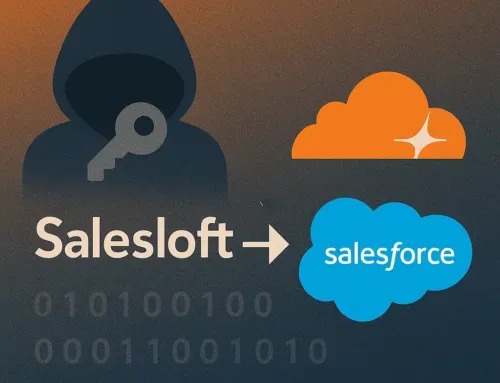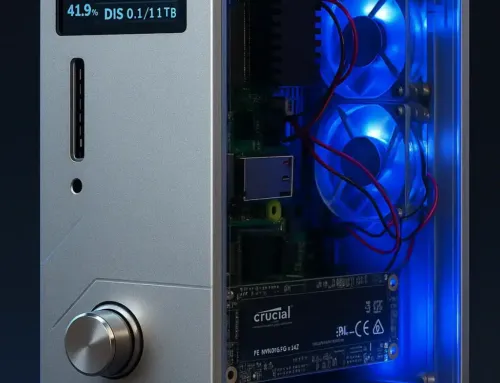
Approx. read time: 7.7 min.
Post: Unifying Forces: The Strategic Integration of the Android Kernel into ChromeOS
The ChromeOS Foundation is Shifting to the Android Kernel
In a move that signifies a significant shift in Google’s operating system strategy, the tech giant has announced that it is beginning the process of integrating parts of the Android stack into the foundational underpinnings of ChromeOS. This includes adopting the Android Linux kernel and Android frameworks as a core component of ChromeOS. This development represents a pivotal moment in the evolution of Google’s operating systems and holds promise for the future of both Android and ChromeOS.
A Paradigm Shift in Google’s OS Strategy
The integration of the Android stack into ChromeOS marks a strategic shift that has the potential to streamline development processes, enhance performance, and introduce new features more rapidly. However, contrary to what some may speculate, this move does not signal the end of ChromeOS or a merger with Android into a single operating system. Instead, it represents a deliberate effort by Google to leverage the strengths of both platforms, ensuring that they complement each other more effectively(Android Central)(Engadget).
Google’s Official Stance
Google has emphasized that this transition aims to accelerate the rollout of new AI features, streamline engineering efforts, and improve the interoperability of different devices, such as smartphones and accessories, with Chromebooks. In an official statement, Google elaborated:
“To continue rolling out new Google AI features to users at a faster and even larger scale, we’ll be embracing portions of the Android stack, like the Android Linux kernel and Android frameworks, as part of the foundation of ChromeOS. We already have a strong history of collaboration, with Android apps available on ChromeOS and the start of unifying our Bluetooth stacks as of ChromeOS 122″(Android Central)(Chrome Unboxed).
This integration will allow ChromeOS to benefit from the extensive work already done on Android, particularly in areas such as AI and machine learning, which are becoming increasingly important in modern computing(Engadget).
The Benefits of Integration
Accelerating AI Innovation
One of the most compelling reasons for this integration is the potential to accelerate AI innovation. Google has been a leader in artificial intelligence and machine learning, and incorporating these capabilities into ChromeOS can bring a host of new features and improvements. For instance, AI-powered wallpapers, which first appeared on the Pixel 8, are now set to become available on Chromebook Plus devices. Without this integration, such features would require extensive redevelopment for ChromeOS, but now they can be seamlessly ported, saving time and resources(Chrome Unboxed)(9to5Google).
Simplified Engineering Efforts
The integration of the Android stack into ChromeOS is also expected to simplify engineering efforts. By aligning the development processes of both operating systems, Google can reduce redundancy and streamline workflows. This alignment will not only make it easier to develop new features but also ensure that they are more consistent across both platforms. This means users can expect a more uniform experience, regardless of whether they are using a Chromebook or an Android device(Engadget)(Chrome Unboxed).
Enhanced Interoperability
Improved interoperability between devices is another key benefit of this integration. As Google continues to unify its Bluetooth stacks, devices such as smartphones, tablets, and accessories will work more seamlessly with Chromebooks. This will enhance the overall user experience, making it easier to switch between devices and access features and data across the Google ecosystem(Chrome Unboxed)(9to5Google).
Addressing Concerns
No Job Losses or Layoffs
One of the immediate concerns that arises with such a significant change is the potential impact on jobs. Google has been quick to address this concern, confirming that there will be no layoffs or job reshuffles as a result of this integration. Instead, the move is designed to better align the Android and ChromeOS teams, enabling them to collaborate more effectively and bring new features to market more quickly(Chrome Unboxed).
Long Timeline for Implementation
Another important point to note is that this integration will not happen overnight. Google has made it clear that this will be a gradual process, with the transition not expected to be complete for quite some time. This means that consumers, enterprises, and educational institutions will not experience any immediate disruptions. Updates will continue to be rolled out as usual, and new hardware will be introduced as planned(Android Central)(Chrome Unboxed).
Maintaining Security and Management Capabilities
Google has also reassured users that the integration will not compromise the security, look and feel, or management capabilities that ChromeOS is known for. The company remains committed to delivering a secure and consistent experience, and the integration with Android is expected to enhance these qualities rather than detract from them(Chrome Unboxed)(9to5Google).
The Future of ChromeOS and Android
As this integration progresses, it is expected to bring a host of benefits to both ChromeOS and Android. By leveraging the strengths of both platforms, Google can deliver a more cohesive and powerful ecosystem. Here are some of the potential future developments that users can look forward to:
Faster Feature Rollouts
With a unified development process, new features and updates can be rolled out more quickly. This means that users will be able to enjoy the latest innovations without having to wait for lengthy development cycles. For example, AI features developed for Android can be quickly adapted for ChromeOS, ensuring that both platforms benefit from the latest advancements(Engadget)(9to5Google).
Improved Device Ecosystem
As interoperability between devices improves, users will find it easier to switch between different devices and access their data and features seamlessly. This will create a more integrated and user-friendly experience, whether they are using a Chromebook, an Android smartphone, or other Google-powered devices(Android Central).
Enhanced AI Capabilities
The integration of Android’s AI capabilities into ChromeOS will bring powerful new features to Chromebooks. From AI-powered wallpapers to more advanced machine learning applications, users can expect their devices to become smarter and more capable. This will enhance productivity, creativity, and overall user satisfaction(Android Central)(9to5Google).
A Balanced Perspective
While the integration of the Android stack into ChromeOS is a significant development, it is important to maintain a balanced perspective. This move is not about merging the two operating systems into one, but rather about creating a more cohesive and efficient development process. By aligning the strengths of both platforms, Google can deliver better features, more quickly and effectively(Chrome Unboxed).
The Role of AI in the Future of Computing
The increasing importance of AI in modern computing cannot be overstated. As devices become smarter and more capable, the demand for advanced AI features will continue to grow. By integrating Android’s AI capabilities into ChromeOS, Google is positioning itself at the forefront of this trend. This will enable the company to deliver cutting-edge features and enhancements that meet the evolving needs of users(Engadget)(Chrome Unboxed).
The Importance of Collaboration
The collaboration between the Android and ChromeOS teams is a key factor in the success of this integration. By working together more closely, these teams can share knowledge, resources, and expertise, leading to more innovative and effective solutions. This collaborative approach will be essential in driving the future development of both platforms(Chrome Unboxed).
The User Experience
Ultimately, the success of this integration will be judged by the impact it has on the user experience. By delivering new features more quickly, improving interoperability between devices, and enhancing AI capabilities, Google aims to provide a more seamless and satisfying experience for users. This focus on the user experience will be crucial in ensuring the continued growth and success of both ChromeOS and Android(9to5Google).
Conclusion
The integration of the Android stack into the foundational underpinnings of ChromeOS represents a significant and strategic shift for Google. By leveraging the strengths of both platforms, Google aims to accelerate AI innovation, simplify engineering efforts, and enhance interoperability between devices. While this move may raise some concerns, Google has reassured users that there will be no job losses or layoffs, and the transition will be gradual, with no immediate disruptions(Chrome Unboxed).
As this integration progresses, users can look forward to faster feature rollouts, improved device interoperability, and enhanced AI capabilities. By maintaining a balanced perspective and focusing on collaboration, Google is poised to deliver a more cohesive and powerful ecosystem that meets the evolving needs of its users. This move signifies a bright future for both ChromeOS and Android, with the promise of better features, more often, and more effectively(Chrome Unboxed)(9to5Google).
In summary, the shift to the Android kernel is a positive development for ChromeOS and Chromebooks. It promises to bring a host of benefits, including faster feature rollouts, improved interoperability, and enhanced AI capabilities. By aligning the strengths of both platforms, Google is set to deliver a more seamless and satisfying user experience, ensuring the continued growth and success of both ChromeOS and Android(Android Central)(Chrome Unboxed)(9to5Google).
Related Videos:
Related Posts:
WhatsApp to Introduce Revolutionary Interoperability Feature Under New EU Regulations
Linux Kernel Can Be Exploited Remotely; Kernel Prior To 5.0.8 Affected
Mind and Machine: Navigating the Future of Brain-Computer Integration
Europe’s Muslim Integration: A Journey of Challenges and Opportunities









